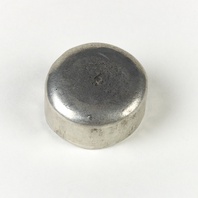
Viking Objects
Reproduction Round Weight
A round lead weight made in an open mould, as shown by the rounded edges of the top which indicate shrinkage in the mould.
Read More
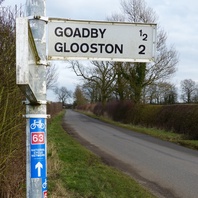
Viking Names
Goadby
The first element of Goadby, in the Gartree Hundred of Leicestershire, comes from the Old Norse male personal name Gauti (genitive singular Gauta), which is either a short form of names in Gaut- or is derived from an original byname meaning ‘a man from Gautland’. The second element of the place-name is Old Norse by ‘a farmstead, a village’. Occasionally the place-name is suffixed with reference to its neighbouring villages Noseley or Keythorpe to distinguish it from Goadby Marwood in the Framland Hundred.
Read More
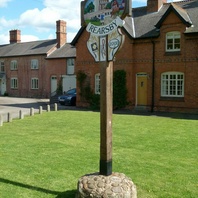
Viking Names
Rearsby
Rearsby, in the East Goscote Hundred of Leicestershire, comes from the Old Norse male personal name Hreiðarr and the Old Norse element by ‘farm, settlement’. The personal name here might be the same as that in Rotherby, Leicestershire.
Read More
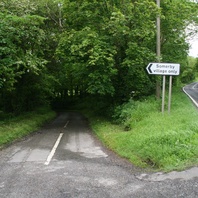
Viking Names
Somerby
Somerby, in the Yarborough Wapentake of Lincolnshire, probably comes from the Old Norse male personal name or byname Sumarliði and the Old Norse element by ‘farm, settlement’. The original byname means ‘the summer traveller’ and is recorded six times in Lincolnshire (all in Lindsey) in the Domesday Book. The spellings in Domesday parallel that of the place-name. Probably identical in origin is Somerby in Leicestershire. Alternatively, the name has been suggested to come from the Scandinavian compound sumar-hlíðar ‘summer slopes’, referring to pastures only used in the summers.
Read More
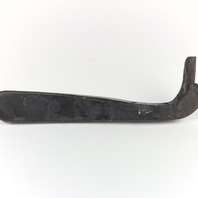
Viking Objects
Reproduction Iron Key
An iron key based on an original found in Grave 511 at Repton, Derbyshire. Iron keys were not only practical items but also symbols of status. Women were often given keys to the families chests of valuables. They also are often buried with keys, representing their authority in the household.
Read More
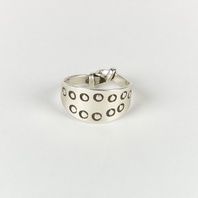
Viking Objects
Reproduction Stamped Finger Ring
A reproduction, stamped, silver ring with knotted ends. Rings with this type of stamped decoration are typical of Scandinavian design during the Viking Age.
Read More
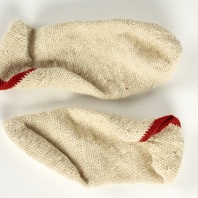
Viking Objects
Reproduction Socks
A pair of reproduction woollen socks based on one found at Coppergate, York. The socks are made using a technique called nålbinding.
Read More
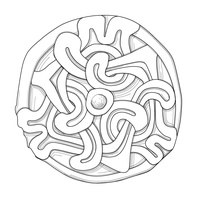
Viking Designs
Drawing of Copper Alloy Disc Brooch
Drawing of a copper alloy, gilded brooch with a zoomorphic design. Brooches were a typical part of female dress. Scandinavian brooches came in a variety of sizes and shapes which included disc, trefoil, lozenge, equal-armed, and oval shapes. The different brooch types served a variety of functions in Scandinavian female dress with oval brooches typically being used as shoulder clasps for apron-type dresses and the rest being used to secure an outer garment to an inner shift. Anglo-Saxon brooches do not match this diversity of form with large disc brooches being typical of ninth century dress styles with smaller ones becoming more popular in the later ninth and tenth centuries. However, since disc brooches were used by both Anglo-Saxon and Scandinavian women they are distinguished by their morphology. Scandinavian brooches were typically domed with a hollow back while Anglo-Saxon brooches were usually flat. Moreover, Anglo-Saxon brooches were worn singly without accompanying accessories.
Read More
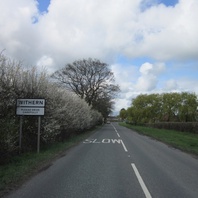
Viking Names
Withern with Stain
The current name combines two originally separate places. Withern shows the influence of Old Norse on an English place-name. Originally, this name was formed from the Old English elements widu ‘wood’ + ærn ‘a house’. However, given the large number of Scandinavian speakers in the area, they pronounced the first element as if it was the cognate Old Norse element viðr, also meaning ‘wood’. The ‘th’ in the modern form preserves this pronunciation difference between the closely-related Old English and Old Norse elements. Stain comes directly from Old Norse steinn ‘stone’ – the place was presumably named after a prominent stone there. Many other place-names in Lincolnshire, like Stainby, Stainfield and Stainton, also contain this word as their first element. Elsewhere in England, such names tend to be spelled ‘Stan-‘, like the very common Stanton, which is the same name but deriving its first element from Old English stān ‘stone’.
Read More
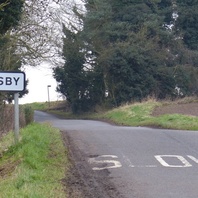
Viking Names
Frisby
Frisby, in the Gartree Hundred of Leicestershire, takes its name from a Scandinavian form of an ethnonym Frisa (gen. pl.) ‘Frisians’ and the Old Norse element by ‘farmstead, village’. This name has a similar construction to Frisby on the Wreake in the East Goscote Hundred of Leicestershire. Traditionally, the place-name has been interpreted as referring to Frisians who took part in the Viking invasions. However, the exact implications of such a name are not yet fully understood and are the subject of ongoing work by Dr Jayne Carroll of the Institute for Name-Studies, University of Nottingham.
Read More
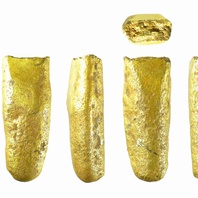
Viking Objects
Gold Ingot (BH-720251)
The Vikings arriving in England had a bullion economy in which they paid for goods, most commonly, with silver that was weighed to an amount agreed between the buyer and the seller. Though rarer than silver equivalents, this gold ingot formed part of the bullion currency used by Vikings in England. It took some time for the Scandinavian settlers to adopt a monetary economy like that of the Anglo-Saxons, and both systems were used simultaneously for a while before they fully adopted the new system. The Vikings were familiar with monetary economies but they treated coins as just another form of bullion before adoption of a monetary economy.
